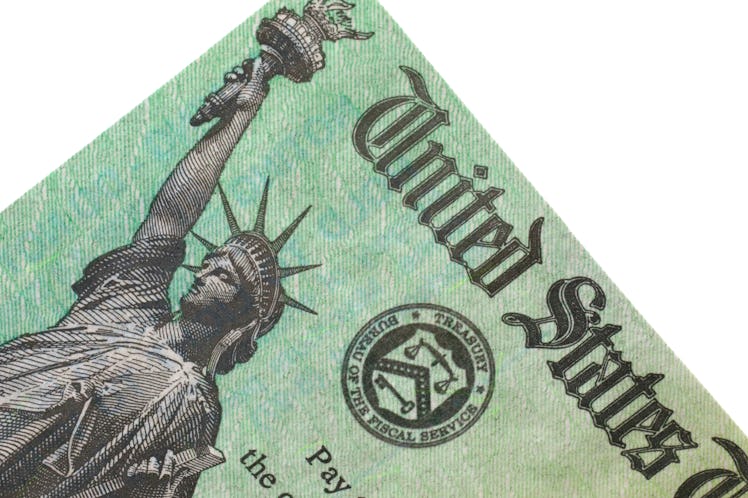Paid Your Loans During The Pandemic Pause? Refund Checks Are Coming
If you paid down your loans during the pandemic payment pause, you could get a check in the mail.

Student loan borrowers who made loan payments during the pandemic payment pause may have a literal check in the mail very soon. During the height of the COVID-19 pandemic, student loan interest rates dropped to zero, and student loan payments were put on a lengthy pause — one that is set to end on December 31, 2022. And if you paid down below the amount that has since been forgiven by the Biden administration, you could get that money back. Here’s how.
Who Is Getting Refund Checks For Student Loan Payments?
Some borrowers took advantage of the period of zero percent interest and paid on their loans to help decrease their principal balances. For many, especially those borrowers who paid their loans in full, those payments turned into frustration after President Biden announced his plan to forgive $10,000 in federally held student loan debt and $20,000 for those who received a Pell Grant below specific income levels.
But, thanks to a little-known provision of the CARES Act, you can benefit from loan forgiveness even if you paid your loan off entirely during the pause, thanks to the refund program. Borrowers have always had the ability to request a refund on any payment made during the pause, but most people either didn’t know about the refund program or had little reason to use it.
With the application for student loan forgiveness officially open (but currently on hold due to numerous legal challenges to the forgiveness program's constitutionality), borrowers across the country are able to request refunds on their pandemic payments and capitalize on their $10,000 or $20,000 in loan forgiveness.
How Do I Get A Refund Check For My Student Loan Payments Made During The Payment Pause?
It’s a simple process, all things considered. Borrowers only need to contact their loan servicer and request a refund on payments made during the pause — don’t request refunds for an amount that will exceed your loan forgiveness, though — and those funds will be returned to you. Your loan balance will increase by that amount, and you can apply for loan forgiveness for the total amount.
A number of different loan types are eligible for refunds. The rule of thumb is that if your loan qualifies for the pandemic payment pause, it qualifies for a pandemic payment refund.
According to Forbes, loans that aren’t eligible include:
- Non-defaulted FFEL loans not covered by the Education Department
- Federal Perkins loans not covered by the Education Department
- Non-defaulted HEAL loans
- Private student loans
The application for forgiveness is officially open, but all funds distribution is on hold while the program has its day in court. Several court actions are pending, mainly from conservative groups and red states that claim the program will be injurious for states who collect revenue from student loans or will cause an undue state tax burden for borrowers. The program is currently blocked by the 8th Circuit Court of Appeals, and at least one group is asking the Supreme Court to step in — a request that has already been made and declined by the Court at least once.
The deadline to apply for forgiveness is December 31, 2023, so you have time — but if you have no reason to wait, don’t.
This article was originally published on